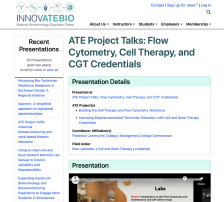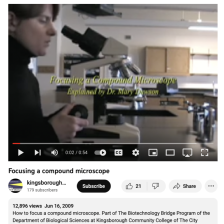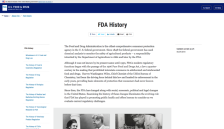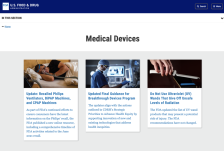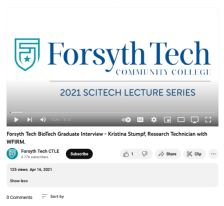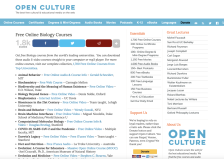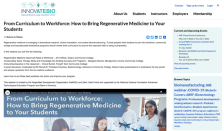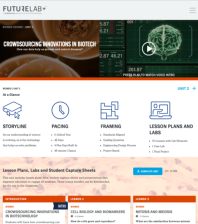Browse Resources
Bio and Chemical Technologies -- Biotechnology
Resources |
|---|
This webinar, published by InnovATEBIO, features two talks: one from Savita Prabhakar on a cell therapy and flow cytometry course included in the biotechnology program at Frederick Community College, and another from Lori Kelman on a certificate in Cell and Gene Therapy at Montgomery College. The...
This video from CUNY Kingsborough Community College describes how to focus a compound microscope. The brief clip, available for viewing on YouTube, would be most useful for students with a basic understanding of the parts of a compound microscope and how to use it. Running time for the video is...
On this site, visitors can learn about the origins and history of the U.S. Food and Drug Administration. The navigation menu on the left will help move around the site to areas including Historical Case Studies of Product Regulation, History of FDA's Internal Organization, Historical Research and...
On this site, visitors can learn about the regulations and standards for the production of medical devices in the US. The site is divided into five broad areas: Products and Medical Procedures, Medical Device Safety, Device Advice: Comprehensive Regulatory Assistance, Science and Research, News and...
On this site, visitors can learn about the regulations and standards for Vaccines, Blood & Biologics. The site is divided up into a number of broad areas, including Allergenics, Cellular and Gene Therapy Products, Tissue and TIssue Products, and Xenotransplantation. The right side of the page also...
This video, from Forsyth Technical Community College, is part of the 2021 SciTech Lecture Series. This series of lectures and interviews is held every year and covers an array of science and technology topics. This video provides an interview with Kristina Stumpf, a Forsyth Technical Community...
This website from Open Culture provides links to free online biology courses from "the world's leading universities." Some courses can be downloaded, while others are available through the web. Courses include Anatomy & Physiology from Carnegie Mellon, Brain Structure and its Origins from Gerald...
Lia Kent, of Stemgent's Research and Development team, has created this video to demonstrate "the proper technique for rapidly thawing hES cells from liquid nitrogen stocks, plating them on mouse embryonic feeder cells, and slowly freezing them for long-term storage." The video is also accompanied...
This webinar, published by the Wake Forest University School of Medicine, includes three short presentations that connect practical aspects of regenerative medicine curriculum to the training of the future biotechnology workforce, followed by a panel discussion. In the first presentation, Jim...
These free, online biotechnology and biomedicine course materials from Futurelab+ make up a 40-week course that explores "the next generation of innovative and equitable medicine being made possible by biotechnology breakthroughs, from data-based diagnosis to wearable medical devices." The course...
|
| ← PreviousNext → |
